Véronique Hoste
EmoTwiCS: A Corpus for Modelling Emotion Trajectories in Dutch Customer Service Dialogues on Twitter
Oct 10, 2023Abstract:Due to the rise of user-generated content, social media is increasingly adopted as a channel to deliver customer service. Given the public character of these online platforms, the automatic detection of emotions forms an important application in monitoring customer satisfaction and preventing negative word-of-mouth. This paper introduces EmoTwiCS, a corpus of 9,489 Dutch customer service dialogues on Twitter that are annotated for emotion trajectories. In our business-oriented corpus, we view emotions as dynamic attributes of the customer that can change at each utterance of the conversation. The term `emotion trajectory' refers therefore not only to the fine-grained emotions experienced by customers (annotated with 28 labels and valence-arousal-dominance scores), but also to the event happening prior to the conversation and the responses made by the human operator (both annotated with 8 categories). Inter-annotator agreement (IAA) scores on the resulting dataset are substantial and comparable with related research, underscoring its high quality. Given the interplay between the different layers of annotated information, we perform several in-depth analyses to investigate (i) static emotions in isolated tweets, (ii) dynamic emotions and their shifts in trajectory, and (iii) the role of causes and response strategies in emotion trajectories. We conclude by listing the advantages and limitations of our dataset, after which we give some suggestions on the different types of predictive modelling tasks and open research questions to which EmoTwiCS can be applied. The dataset is available upon request and will be made publicly available upon acceptance of the paper.
A Million Tweets Are Worth a Few Points: Tuning Transformers for Customer Service Tasks
Apr 16, 2021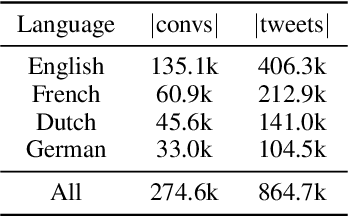
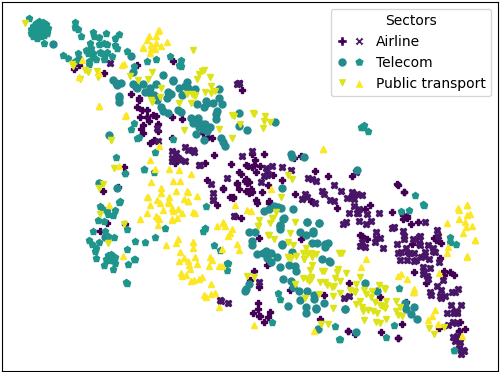
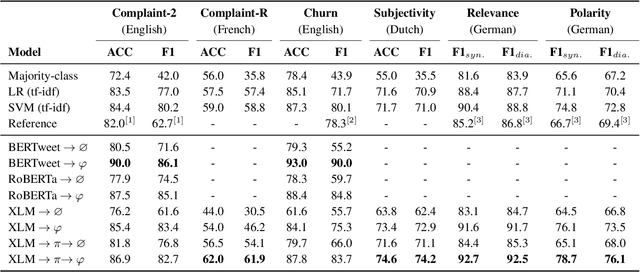
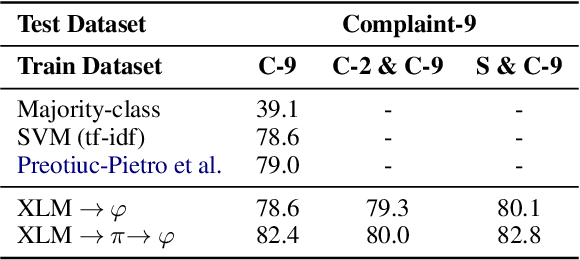
Abstract:In online domain-specific customer service applications, many companies struggle to deploy advanced NLP models successfully, due to the limited availability of and noise in their datasets. While prior research demonstrated the potential of migrating large open-domain pretrained models for domain-specific tasks, the appropriate (pre)training strategies have not yet been rigorously evaluated in such social media customer service settings, especially under multilingual conditions. We address this gap by collecting a multilingual social media corpus containing customer service conversations (865k tweets), comparing various pipelines of pretraining and finetuning approaches, applying them on 5 different end tasks. We show that pretraining a generic multilingual transformer model on our in-domain dataset, before finetuning on specific end tasks, consistently boosts performance, especially in non-English settings.
Current Limitations in Cyberbullying Detection: on Evaluation Criteria, Reproducibility, and Data Scarcity
Oct 25, 2019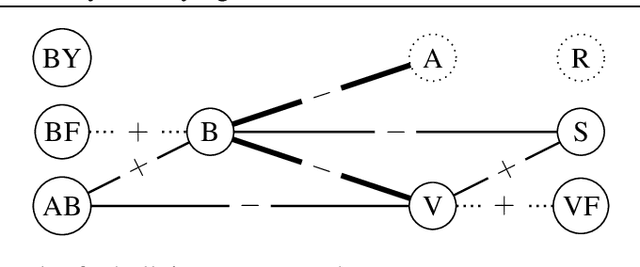
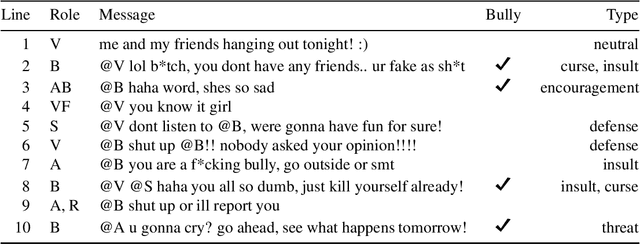
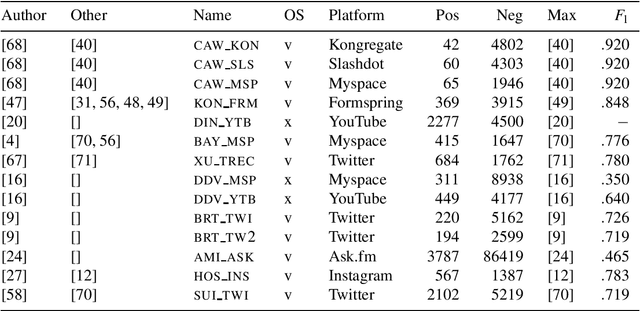
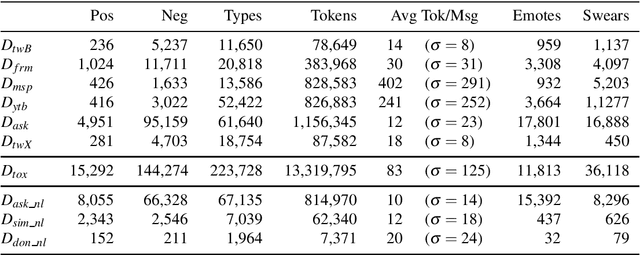
Abstract:The detection of online cyberbullying has seen an increase in societal importance, popularity in research, and available open data. Nevertheless, while computational power and affordability of resources continue to increase, the access restrictions on high-quality data limit the applicability of state-of-the-art techniques. Consequently, much of the recent research uses small, heterogeneous datasets, without a thorough evaluation of applicability. In this paper, we further illustrate these issues, as we (i) evaluate many publicly available resources for this task and demonstrate difficulties with data collection. These predominantly yield small datasets that fail to capture the required complex social dynamics and impede direct comparison of progress. We (ii) conduct an extensive set of experiments that indicate a general lack of cross-domain generalization of classifiers trained on these sources, and openly provide this framework to replicate and extend our evaluation criteria. Finally, we (iii) present an effective crowdsourcing method: simulating real-life bullying scenarios in a lab setting generates plausible data that can be effectively used to enrich real data. This largely circumvents the restrictions on data that can be collected, and increases classifier performance. We believe these contributions can aid in improving the empirical practices of future research in the field.
Automatic Detection of Cyberbullying in Social Media Text
Jan 17, 2018



Abstract:While social media offer great communication opportunities, they also increase the vulnerability of young people to threatening situations online. Recent studies report that cyberbullying constitutes a growing problem among youngsters. Successful prevention depends on the adequate detection of potentially harmful messages and the information overload on the Web requires intelligent systems to identify potential risks automatically. The focus of this paper is on automatic cyberbullying detection in social media text by modelling posts written by bullies, victims, and bystanders of online bullying. We describe the collection and fine-grained annotation of a training corpus for English and Dutch and perform a series of binary classification experiments to determine the feasibility of automatic cyberbullying detection. We make use of linear support vector machines exploiting a rich feature set and investigate which information sources contribute the most for this particular task. Experiments on a holdout test set reveal promising results for the detection of cyberbullying-related posts. After optimisation of the hyperparameters, the classifier yields an F1-score of 64% and 61% for English and Dutch respectively, and considerably outperforms baseline systems based on keywords and word unigrams.
 Add to Chrome
Add to Chrome Add to Firefox
Add to Firefox Add to Edge
Add to Edge